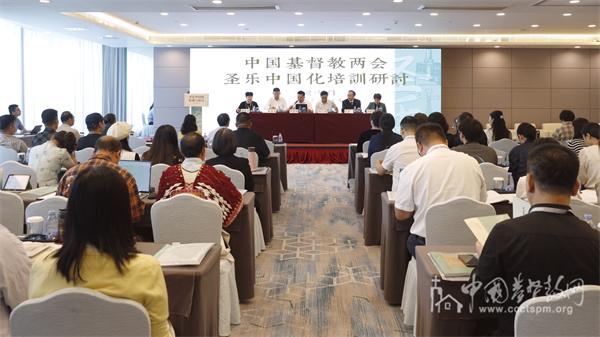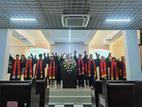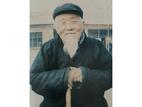From October 28 to November 1, CCC&TSPM organized a workshop on the sinicization of Christian sacred music in Xiamen, Fujian, with the participation of 60 individuals, including pastoral workers, theological educators, and experts from relevant institutions nationwide.
During the opening ceremony, Rev. Cao Shengjie, former president of the China Christian Council (CCC), who couldn’t attend in person due to her advanced age, addressed the attendees via a pre-recorded video, reflecting on the editing process of the Chinese New Hymnal and appreciating for the CCC&TSPM’s recent initiatives on the compilation and publication of a sinicized hymnal, the re-edition of the congregational hymnal and the seminars and training sessions. Rev. Cao urged the church music co-workers to continue creating new works that align with the principles of sinicization to meet the needs of the Chinese church in the new era.
Teacher Sun Chenhui, associate researcher at the Music Research Institute of the Chinese Academy of Arts, delivered a themed lecture on "Practical Paths and Exploration of the Sinicization of Religions—Taking the 'Chinese Sacred Music since the Tang Dynasty' Concert as an Example." In her lecture, she reflected on the historical development of Chinese Christian sacred music and analyzed the potential and experiences of sinicizing religion from an artistic perspective.
During the two-and-a-half-day session, 22 sacred music workers, educators, and experts engaged in discussions on three main topics: "The Sinicization of Sacred Music: History, Definition, and Path," "Insights on the Creation of Sinicized Sacred Music," and "The Practice of the Sinicization of Sacred Music," utilizing theoretical insights and practical experiences and incorporating with a variety of media, such as music, images, videos, and instruments.
The seminar addressed several key issues, covering the sacredness of church music and references to popular music, challenges in translating hymns and the creation of original sacred music, the role of dialect hymns and the unique characteristics of sacred music in ethnic minority and border regions, the contributions of Chinese composers to professional sacred music creation and the universal unity of hymns. Additionally, discussions included the dialogue between Eastern and Western traditions along with the modernity of localization, concerns about the cultivation of sacred music talent, and the importance of these talents in advancing the sinicization of Christianity.
Rev. Shan Weixiang, vice chairperson of the national TSPM, emphasized that this training and seminar is a key initiative in implementing the second five-year plan to sinicize Christianity. He urged all regions to prioritize the sinicization of sacred music, establish a comprehensive and effective system for cultivating professional sacred music talents, and produce more outstanding sacred music pieces that the believers welcome. Rev. Shan also mentioned addressing the balance between tradition and modernity, continuity and context, while fostering communication and collaboration with the academic community.
According to the host, over 60 papers were submitted from this conference.












